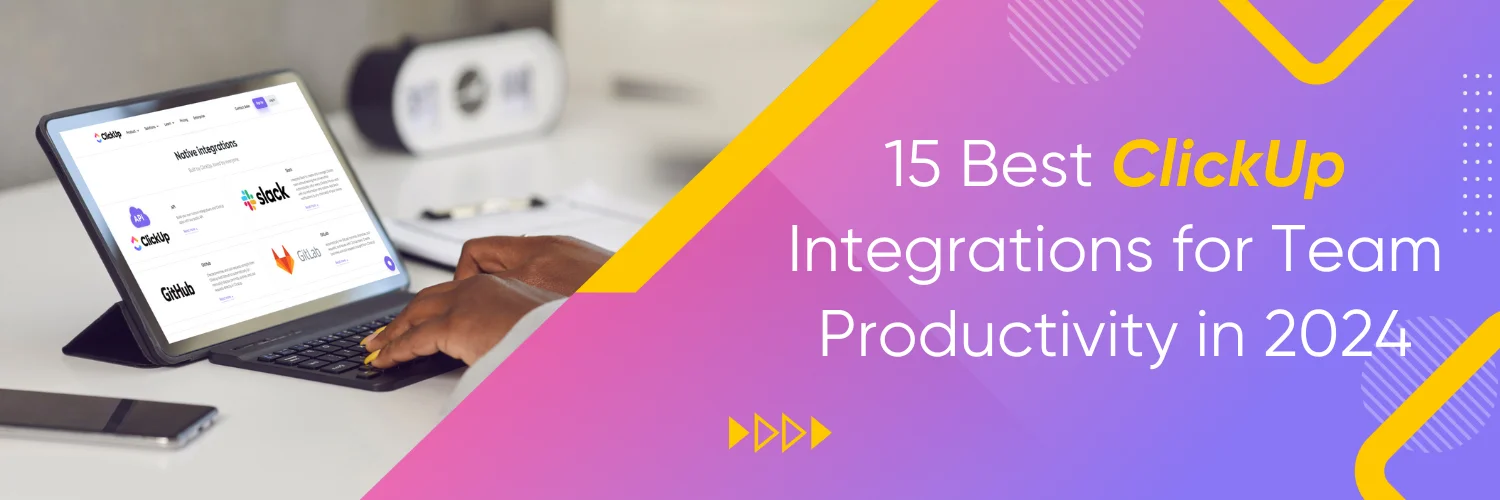Business Intelligence (BI) refers to the use of software applications and technologies to collect, analyze, and present data in a meaningful way to support decision-making processes within an organization. It plays a vital role in helping businesses gain insights, identify trends, and make informed strategic choices. Traditional BI tools have been widely used, but they come with certain limitations such as static reporting and lack of advanced analytics capabilities.
Artificial Intelligence (AI) and Machine Learning (ML) in BI
Artificial Intelligence (AI) and Machine Learning (ML) have emerged as game-changers in the field of Business Intelligence. AI-powered BI tools leverage advanced algorithms to automate data analysis, uncover patterns, and generate predictive insights.
ML algorithms enable systems to learn from historical data, identify trends, and make accurate predictions. This shift towards AI and ML in BI enables businesses to extract actionable insights faster and more efficiently.
Benefits of AI-powered BI tools
- Enhanced Data Analysis: AI-powered BI tools can process and analyze large volumes of data quickly, enabling businesses to gain deeper insights and identify hidden patterns that may not be easily noticeable through traditional methods.
- Predictive Analytics: By leveraging ML algorithms, BI tools can generate predictive models that help businesses anticipate trends, customer behavior, and market fluctuations, empowering them to make proactive decisions.
- Automated Insights: AI-powered BI tools automate the process of generating reports, dashboards, and visualizations, saving time and effort for analysts and allowing them to focus on more strategic tasks.
Examples of AI and ML applications in BI
- Predictive Sales Analytics: AI-powered BI tools can analyze historical sales data, customer behavior, and external factors to predict future sales trends, optimize pricing strategies, and identify potential growth opportunities.
- Sentiment Analysis: AI algorithms can analyze social media data and customer feedback to gauge sentiment and identify patterns in consumer behavior, helping businesses improve their products, services, and brand reputation.
- Anomaly Detection: ML algorithms can identify anomalies and outliers in data, enabling businesses to detect fraud, operational inefficiencies, or unusual patterns that require further investigation.
Natural Language Processing (NLP) and Conversational BI
Natural Language Processing (NLP) is a branch of AI that focuses on the interaction between computers and human language. In the context of BI tools, NLP enables users to query data using natural language, making data exploration and analysis more accessible to a wider audience.
Enabling conversational queries and insights
NLP-powered BI tools allow users to ask questions and receive answers in plain language. This conversational interface eliminates the need for complex queries or technical expertise, enabling business users to explore data and derive insights without relying on data analysts or IT professionals.
Improving accessibility and user experience
By integrating NLP capabilities into BI tools, organizations can democratize data access and promote self-service analytics. Users can interact with the BI system through voice commands or text-based interfaces, making data exploration and analysis more intuitive and user-friendly.
Augmented Analytics
Augmented Analytics refers to the integration of AI and ML technologies into BI tools to automate data preparation, visualization, and analysis processes. It aims to enhance the capabilities of human analysts by leveraging machine intelligence.
Understanding augmented analytics and its impact on BI
Augmented Analytics automates time-consuming and repetitive tasks involved in data preparation, such as data cleaning, data integration, and feature engineering. It also automates the generation of visualizations and insights, providing users with actionable information in a simplified manner.
Automation of data preparation, visualization, and analysis
Augmented Analytics tools leverage AI and ML algorithms to automatically identify relevant data sources, clean and transform data, and select appropriate visualizations based on the nature of the data and the user’s goals. This automation accelerates the data exploration process and reduces the reliance on manual data preparation.
Assisting users in making data-driven decisions
By automating data analysis and visualization, augmented analytics tools enable users to focus on interpreting the insights and making data-driven decisions. These tools can provide recommendations, suggest alternative visualizations, and highlight important patterns or outliers, empowering users to extract actionable insights from complex data sets.
Emerging Technologies in BI
Internet of Things (IoT) and BI
The Internet of Things (IoT) refers to the network of interconnected physical devices, sensors, and systems that collect and exchange data. When integrated with BI tools, IoT data can provide real-time insights and improve decision-making processes.
Integrating IoT data into BI systems
BI tools can ingest and analyze data generated by IoT devices, such as sensor data, machine-generated logs, or telemetry data. This integration enables businesses to gain real-time visibility into various operational aspects, such as supply chain management, asset tracking, or environmental conditions.
Harnessing real-time insights for better decision-making
By combining IoT data with BI tools, organizations can monitor and analyze real-time data streams, enabling them to respond quickly to changing conditions, identify trends, and make data-driven decisions in time-sensitive scenarios.
Use cases of IoT and BI convergence
- Predictive Maintenance: By analyzing IoT sensor data, BI tools can identify patterns that indicate equipment failures or maintenance needs. This enables businesses to schedule preventive maintenance activities, reducing downtime and optimizing operational efficiency.
- Smart Retail Analytics: BI tools integrated with IoT devices can analyze customer behavior, footfall patterns, and inventory data to optimize store layouts, improve customer experiences, and enhance supply chain management.
- Energy Management: By combining IoT data from smart meters and energy monitoring devices with BI tools, organizations can track energy consumption patterns, identify areas for optimization, and implement energy-saving measures.
How Blockchain Enhances Data Security and Trust in BI
Blockchain provides a tamper-proof and immutable ledger that records transactions in a decentralized and transparent manner. By leveraging blockchain, BI tools can ensure data integrity, prevent unauthorized access or modifications, and establish trust among stakeholders.
Ensuring data integrity and transparency
Blockchain can be used to create a verifiable audit trail of data transformations, ensuring that the data used for analysis remains unaltered. It enables organizations to track the origin, lineage, and transformations applied to the data, enhancing transparency and trustworthiness.
Opportunities for decentralized BI solutions
Blockchain technology enables the creation of decentralized BI platforms, where data is stored across a network of nodes, eliminating the need for a centralized authority. Decentralized BI solutions can provide enhanced privacy, data ownership, and secure collaboration between multiple parties without compromising data security.
Edge Computing and BI
Edge computing refers to the practice of processing data near the source or at the edge of the network, reducing latency and enabling real-time analytics. When integrated with BI tools, edge computing can enhance data processing capabilities and enable faster insights.
Exploring the potential of edge computing in BI
Edge computing brings computing power closer to the data source, reducing the need to transfer large volumes of data to a centralized location for analysis. This approach enables organizations to process data locally, reducing latency and enabling real-time or near real-time analytics.
Reducing latency and enhancing real-time analytics
BI tools integrated with edge computing can process and analyze data on edge devices or local servers, minimizing the latency caused by data transfer to centralized servers. This capability is particularly beneficial in scenarios where real-time insights are critical, such as monitoring systems, predictive maintenance, or IoT-driven analytics.
Edge computing applications in BI
- Real-time Dashboarding: Edge computing enables the generation of real-time dashboards that provide up-to-the-minute insights and enable faster decision-making. This is especially useful in scenarios where real-time monitoring or operational control is required.
- Offline Analytics: In scenarios where network connectivity is limited or unreliable, edge computing allows BI tools to perform data analysis and generate insights even when disconnected from centralized servers. This capability is valuable in remote or mobile environments where continuous connectivity is not guaranteed.
- Data Filtering and Aggregation: Edge computing can be used to preprocess data at the edge, performing initial filtering, aggregation, or summarization before sending the relevant data to centralized BI systems. This reduces the volume of data transferred and minimizes the burden on network resources.
Challenges and Considerations
Data Privacy and Ethics
With the increasing use of data in BI processes, ensuring data privacy and ethical use of data has become a critical concern.
Addressing privacy concerns in BI tools
Organizations must implement robust data protection measures, including access controls, encryption, and anonymization techniques, to safeguard sensitive data. Additionally, compliance with data privacy regulations such as GDPR (General Data Protection Regulation) or CCPA (California Consumer Privacy Act) is crucial to protect user privacy.
Ensuring ethical use of data in BI processes
Businesses should establish clear guidelines and policies for ethical data use, including obtaining user consent, ensuring data transparency, and respecting data ownership rights. It is essential to strike a balance between data-driven insights and the protection of individual privacy and rights.
Regulatory Considerations and Compliance
Organizations must stay updated with evolving data privacy regulations and ensure compliance with legal requirements. Compliance with industry-specific regulations, such as HIPAA (Health Insurance Portability and Accountability Act) in the healthcare sector, is also crucial when dealing with sensitive data.
Data Integration and Quality
Data integration is a common challenge in BI, as organizations often deal with data from diverse sources and formats. Ensuring data quality is essential to obtain accurate and reliable insights.
Overcoming challenges in data integration from diverse sources
Organizations should invest in data integration technologies that can connect to various data sources, extract data in different formats, and transform it into a unified format for analysis. Robust data integration processes enable organizations to bring together disparate data sources seamlessly.
Ensuring data quality for accurate insights
Data quality plays a crucial role in the reliability of BI insights. It is essential to establish data quality standards, perform data profiling and cleansing, and implement data governance practices to maintain data accuracy, completeness, and consistency.
Best practices for effective data management in BI
Implementing a data management strategy that includes data cataloging, metadata management, and data lineage can help organizations streamline data integration, improve data quality, and ensure data governance. Regular monitoring and auditing of data processes also contribute to maintaining high data quality standards.
User Adoption and Training
Driving user adoption of new BI tools is essential to maximize the benefits of emerging technologies. Adequate training and creating a data-driven culture are key factors in achieving successful user adoption.
Strategies for driving user adoption of new BI tools
- Executive Sponsorship: Obtaining support and buy-in from senior leadership is crucial in promoting the use of new BI tools. Executives can set an example by actively using the tools and communicating their value to the organization.
- User-Centric Design: BI tools should be designed with the end-users in mind, considering their needs, skill levels, and preferences. User-friendly interfaces, intuitive workflows, and personalized dashboards can significantly improve user adoption.
- Change Management: Implementing change management practices, such as conducting user surveys, organizing training sessions, and providing ongoing support, can help employees embrace new BI tools and overcome resistance to change.
Importance of training and upskilling employees
Organizations should invest in comprehensive training programs to ensure that employees have the necessary skills to utilize the full potential of new BI tools. Training can include hands-on workshops, online courses, and knowledge-sharing sessions to empower employees to leverage the capabilities of advanced BI technologies effectively.
Creating a data-driven culture within organizations
Fostering a data-driven culture involves promoting the use of data in decision-making processes, recognizing and rewarding data-driven achievements, and encouraging collaboration across departments. A strong data-driven culture supports the successful implementation and adoption of new BI tools.
Conclusion
The future of Business Intelligence (BI) tools lies in the adoption of emerging trends and technologies that enhance data analysis, decision-making processes, and user experiences. AI and ML bring automation and predictive capabilities, NLP enables conversational BI, and augmented analytics automates data preparation and analysis. The convergence of IoT, blockchain, and edge computing with BI further expands the possibilities for real-time insights, data security, and decentralized solutions. However, organizations must also address challenges related to data privacy, integration, and user adoption to maximize the benefits of these advancements. By embracing new technologies, implementing best practices, and fostering a data-driven culture, businesses can gain a competitive edge in the evolving landscape of BI.
To stay ahead in the rapidly evolving landscape of Business Intelligence, it is crucial to partner with a trusted and innovative solution provider. Ubique Digital Solutions is a leading provider of cutting-edge BI tools and technologies that can propel your business to success. Our expertise in digital solutions and software integration can help you unlock the full potential of your data and make data-driven decisions with confidence. Take the next step towards transforming your business and boosting your competitive advantage. Contact Ubique Digital Solutions today to explore how our solutions can drive your business toward a successful future.
FAQs
Q: What is the future of business intelligence?
The future of business intelligence lies in the adoption of emerging technologies such as artificial intelligence, machine learning, natural language processing, augmented analytics, IoT, blockchain, and edge computing. These technologies enhance data analysis, automation, real-time insights, data security, and user experiences, enabling businesses to make more informed decisions and gain a competitive edge.
Q: How is artificial intelligence transforming BI tools?
Artificial intelligence is transforming BI tools by automating data analysis, uncovering patterns, and generating predictive insights. AI-powered BI tools can process and analyze large volumes of data quickly, provide recommendations, and automate the generation of reports and visualizations. This enables businesses to extract actionable insights faster and more efficiently.
Q: What is augmented analytics and how does it impact BI?
Augmented analytics refers to the integration of AI and ML technologies into BI tools to automate data preparation, visualization, and analysis processes. It enhances the capabilities of human analysts by automating repetitive tasks, providing data-driven recommendations, and simplifying the generation of insights. Augmented analytics accelerates the data exploration process and empowers users to make data-driven decisions.
Q: How does IoT integrate with business intelligence?
IoT integrates with business intelligence by providing real-time data from interconnected physical devices and sensors. BI tools can ingest and analyze IoT data to gain real-time visibility into various operational aspects, improve decision-making processes, and optimize processes such as supply chain management, asset tracking, or environmental monitoring.
Q: What role does blockchain play in BI?
Blockchain enhances data security and trust in BI processes. It provides a decentralized and tamper-proof ledger that ensures data integrity, prevents unauthorized access or modifications, and establishes trust among stakeholders. Blockchain technology can be used to create secure and transparent data ecosystems, enabling organizations to share data and collaborate without compromising data security.
























